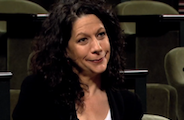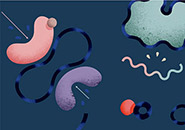A coldwater fish, a tiny mouse, and a mutant gene are the unlikely stars of three short films produced by HHMI. The movies premiered at a red carpet event attended by 600 teachers at the National Association of Biology Teachers annual meeting last October. They are the first of a series of 10-minute science films that use storytelling to teach topics in evolutionary biology.
The stars were naturals for their parts. For example, the Antarctic icefish, whose blood is as clear as the ice water it lives in, provides a stunning illustration of an animal adapting to a hostile environment.
“Film is a powerful way to tell stories,” says HHMI Vice President for Science Education Sean B. Carroll. “You can have moving images and animations. You can hear scientists talking in their own words and see the places where they do their own work. The right story, told well, can be engaging, informative, and memorable.”
The idea for the series came to Carroll when he was a consulting producer for the public television program NOVA. He saw how much footage was left on the cutting-room floor and recognized the potential of this unused film.
The three movies were assembled by award-winning filmmakers Sarah Holt and Bill Anderson, using video already shot for NOVA specials as well as new interviews with scientists to tie the stories together.
HHMI’s recently launched film production unit will begin making feature-length films soon, and the team plans to use footage from that effort to create additional short films. The goal is to have a library of dozens of short films, with companion resources such as online animations, videos, and lesson plans, to help teachers connect the movies to their curricula.
HHMI’s education resource group is already talking to teachers to identify important topics for future films. “I think there’s a really healthy dynamic, even a tension, between the way filmmakers want to tell a story—with pace and drama—and the way educators want to make sure certain points are hit upon and made clear,” says Dennis W.C. Liu, who heads the group. “And so it’s important to us that this is a collaboration, a constant back and forth, between those groups.”
More importantly, Liu and Carroll want the films to show students the process of scientific discovery. “By telling these stories, we hope we will excite students and encourage them to look deeper into these topics,” Liu says.









